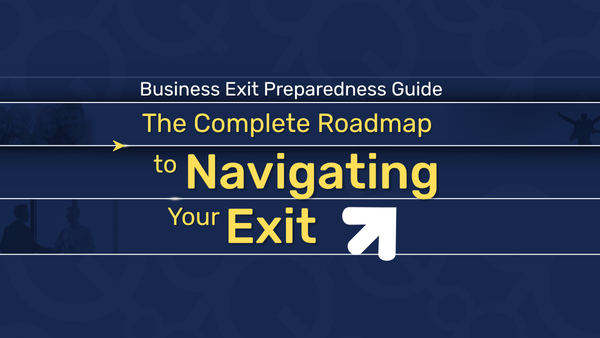Imagine walking through your office after hours, when the usual buzz of activity has faded into silence. In these quiet moments, you might see your business differently – not just as the sum of its daily operations, but as a complex tapestry of interwoven assets, many hidden in plain sight. Like a master painting that reveals new details under different lighting, your business holds layers of value that aren’t immediately visible on a balance sheet.
Consider the humble coffee shop around the corner that recently sold for three times its expected value. The secret wasn’t in its revenue or even its prime location. The real worth lay in its meticulously documented recipes, its proprietary coffee-sourcing relationships spanning three continents, and its innovative customer loyalty program that predicted ordering patterns with remarkable accuracy. These hidden assets – the invisible infrastructure of success – transformed a simple retail operation into a highly valuable business model.
When business owners think about exit value, they often focus on the obvious metrics: revenue, profit margins, and market share. However, beneath these surface-level indicators lies a wealth of overlooked assets that could significantly enhance your company’s worth. Understanding and developing these hidden value drivers isn’t just about preparing for an exit—it’s about building a stronger, more resilient business today.
Uncovering Your Business's Secret Wealth
Think of your business as an iceberg. The visible portion—your financial statements—represents only a fraction of your true value. The substantial worth often lies beneath the surface, in areas that traditional valuation methods might miss but sophisticated buyers actively seek.

Intellectual Property: Beyond Patents and Trademarks
While most business owners understand the value of formal intellectual property protections, many overlook the vast landscape of “soft IP” their companies generate daily.
This includes:
Process Intelligence Your company’s unique ways of solving problems, serving customers, or streamlining operations constitute valuable intellectual property, even if they’re not formally patented. Document these processes meticulously. What seems routine to you might represent a competitive advantage to potential buyers.
Tribal Knowledge The accumulated expertise within your organization—from customer service best practices to vendor management techniques—represents significant value. Transform this implicit knowledge into explicit, documented systems that can transfer to new ownership.
Data Assets Every business generates data, but few properly leverage this asset.
Consider:
- Customer behavior patterns
- Service delivery metrics
- Operational efficiency data
- Market trend information
Systematically collecting and analyzing this data creates valuable business intelligence that can significantly impact your exit value.

The Power of Relationships
While relationships can’t be “sold,” properly structured business connections can become valuable transferable assets:
Customer Relationships
Look beyond your customer list to the deeper aspects of these relationships:
- Historical buying patterns
- Service preferences
- Communication protocols
- Account-specific solutions
Document these elements to demonstrate the stability and predictability of your customer relationships.
Vendor Networks
Strong vendor relationships often translate into preferential treatment, better terms, and reliable supply chains—all valuable assets to potential buyers. Focus on:
- Documented agreements
- Performance histories
- Special arrangements
- Crisis response protocols

Building Intangible Value
Some of the most valuable business assets can’t be touched but significantly impact exit value:
Brand Equity
Your brand’s strength extends beyond name recognition. Consider:
- Customer loyalty metrics
- Market perception data
- Social media engagement
- Community presence
Systematically measure and document these elements to demonstrate your brand’s true value.
Cultural Assets
A strong company culture can be a significant value driver. Focus on:
- Employee engagement metrics
- Innovation protocols
- Problem-solving methodologies
- Training systems
Transform these intangible elements into documented, replicable systems that can survive leadership transitions.

Technology Infrastructure
Even non-tech businesses possess valuable technology assets:
- Custom software solutions
- Automation protocols
- Digital workflows
- Integration systems
Document not just the existence of these tools but their impact on efficiency and scalability.

Strategic Value Enhancement
To maximize these hidden assets:
- Audit Your Hidden Assets Conduct a thorough inventory of all potential value drivers, including those that might seem obvious to you but valuable to others
- Document Everything Create comprehensive documentation for all processes, relationships, and systems. This transforms intangible assets into transferable value.
- Measure Impact Develop metrics to quantify the value of these assets. How much time do your systems save? What cost reductions do your relationships enable?
- Protect and Enhance Implement strategies to protect and strengthen these assets.
This might include:
- Formalizing informal processes
- Strengthening relationship agreements
- Enhancing documentation systems
- Developing proprietary tools
- Communicate Value Prepare clear presentations of these assets’ worth, supported by data and concrete examples.
The Long-Term Perspective
Remember that enhancing these hidden assets creates value whether you exit or not. Every improvement in these areas strengthens your business’s operational effectiveness and market position.
Start viewing your business through the lens of a potential buyer. What unique advantages have you built? What systems could be replicated in other markets? What relationships could be leveraged for growth?
The process of uncovering and developing hidden assets often reveals opportunities for immediate business improvement. By focusing on these often-overlooked value drivers, you not only prepare for a potentially more lucrative exit but also build a stronger, more resilient company today.
The key is to start this process well before any planned exit. This gives you time to identify, develop, and document these hidden assets properly, ensuring they translate into tangible value when the time comes to transition your business.







